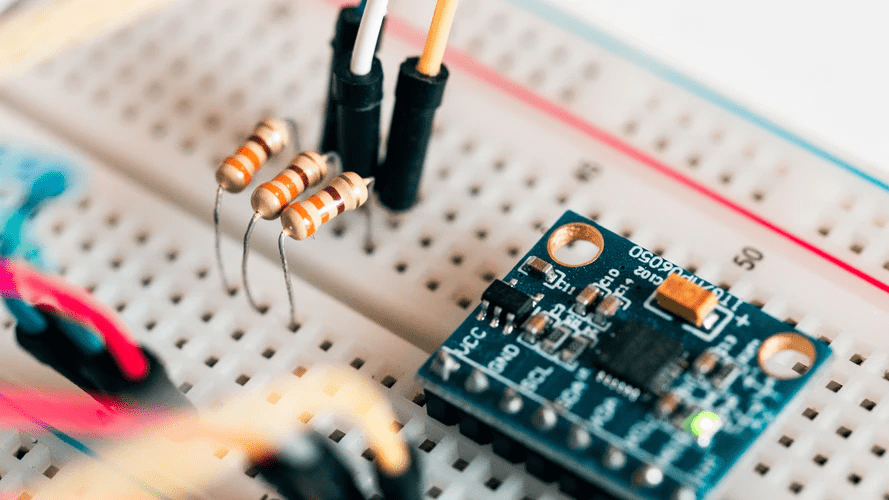
Reduce Your Any Layer HDI PCB and Stacked Microvias PCB Cost
Though a microvia PCB and an any-layer HDI PCB have significant advantages, these boards are quite expensive in terms of fabrication. For instance, compactness and complex circuitry can increase the cost. In this post, we’ll discuss what stacked microvia and any-layer HDI PCBs are and how they can be manufactured in a cost-effective way.
What are Any Layer HDI PCBs and Stacked Microvia PCBs?
All electrical connections between both the different layers are made via laser-drilled microvias on HDI any-layer printed circuit boards, which are the next technological advancement of HDI microvia PCBs. The fundamental benefit of this technology is that it allows for unfettered interconnection of all layers.
Any Layer HDI PCBs are multilayer PCBs that provide unrestricted communication between all layers through the use of filled plating technology and laser technology, allowing for ultra-fine processing. As a result, Any Layer HDI PCB microvia III-Any Layer microvia is available. These PCBs are perfect for resizing and thinning smartphones and other high-performance electrical gadgets because of their greater design flexibility and higher-density cabling.
Stacks of buried vias, or a blind microvia placed on top of buried microvias, are known as stacked microvias PCB. The internal hidden microvias in the stack must be sealed with conductive paste and plated over to maintain a firm connection as the next via in the stack is laid and plated, which is the traditional approach to span over numerous layers in an HDI PCB.
Way to Reduce the Cost of Your microvia PCB Manufacturing
Here are some ways you can reduce the costs of your stacked microvias PCB and other HDI PCB designs:
Stick to the Most Common Board Shapes
Typically, you should design your board in the usual rectangular and square shapes common of most PCBs, except if you have a strange-looking casing to fit your circuit in. Any deviation from the norm will result in a large increase in your manufacturing expenses. Also, until you need to mount your PCB to an exterior, don't bother with any inside cutouts.
Try to maintain a straightforward approach. To avoid wasting money by having your fabricator hand-assemble your odd components, make sure to follow the industry-standard specs, which may vary between each manufacturing company.
Minimize the Size of Your PCB
While it may be the most visible, it is also the one component that has the potential to drain your bank account. Always aim to restrict the size of your finished board to a bare minimum since the larger it becomes, the higher your costs get. This also goes both ways. A microvia PCB designer will need very accurate equipment to fit it altogether if you build your board too small, which would also charge more. Therefore, navigating between size and complexity is a fine balance, but aim to lean on the approach of less is more.
Select a Big Diameter for Holes
Your production expenses will rise as your annular rings and holes become smaller. Reduced spacing necessitates precision machinery. Many fab firms may charge you extra if you require holes finer than 0.4mm, so call before to avoid any misunderstandings.
Choose the Right Via
Through-hole vias, buried vias, and blind vias are the three types of vias. The last two will only be utilized for PCBs with a high frequency and density. So, if you don't require these sorts of vias in your layout, just take them out to save money on production. Stick with the through-hole via for straightforward production in simple setups.
Selecting the Right Materials
Materials have a significant impact on the circuit board's manufacturability and overhead expenses. The idea is to constantly choose the best material for manufacture and assembly while still meeting your thermal and electric requirements. It is recommended to ensure that your high-speed material is compatible with your HDI PCB design.
Prepare Your PCB for Panelization
PCBs are created at a fabrication company on a large panel with a lot of other PCBs, or exclusively yours, according to how many you requested. Utilizing the largest panel size offered by your supplier will save you a lot of money in the end. When all of your circuits are on one panel, a rapid-fire machine can place all of your components in one attempt, eliminating the need for extra setup time.
Avoid Extra Layers
Think twice about adding a number of extra layers for greater routing space, power planes, or performance. A four-layer board differs from a two-layer board by a factor of 2. Aim to keep things simple and concise in your next project, and use only as many layers as necessary to get the work done.
Final Words
When constructing any printed circuit board, whether it be a stacked microvias PCB or an any-layer HDI PCB, keeping the cost in mind is essential. As more complicated designs grow pricier, it's critical to have cost-cutting strategies in place.
Low-cost PCB fabrication is difficult, and it takes a lot of machinery, human labor, and processes to pull it off. However, your list of worries is likely to be different, involving getting your motherboard back in a reasonable period while still saving money. That's why Hemeixin aims to assist you in avoiding unneeded complexity and faults in your PCB design, which can cost you a lot of money when it comes to HDI PCB manufacturing.
We can assist you in designing and manufacturing multilayer rigid-flex PCBs, as well as flexible PCBs and HDIs, for a range of highly reliable uses or applications. To obtain a better sense of which design will work best for your application, contact Hemeixin's HDI Rigid Flex PCB manufacturers. Use our HDI Rigid Flex PCB Fabrication Cost Calculator to get a fast online price for your project.




